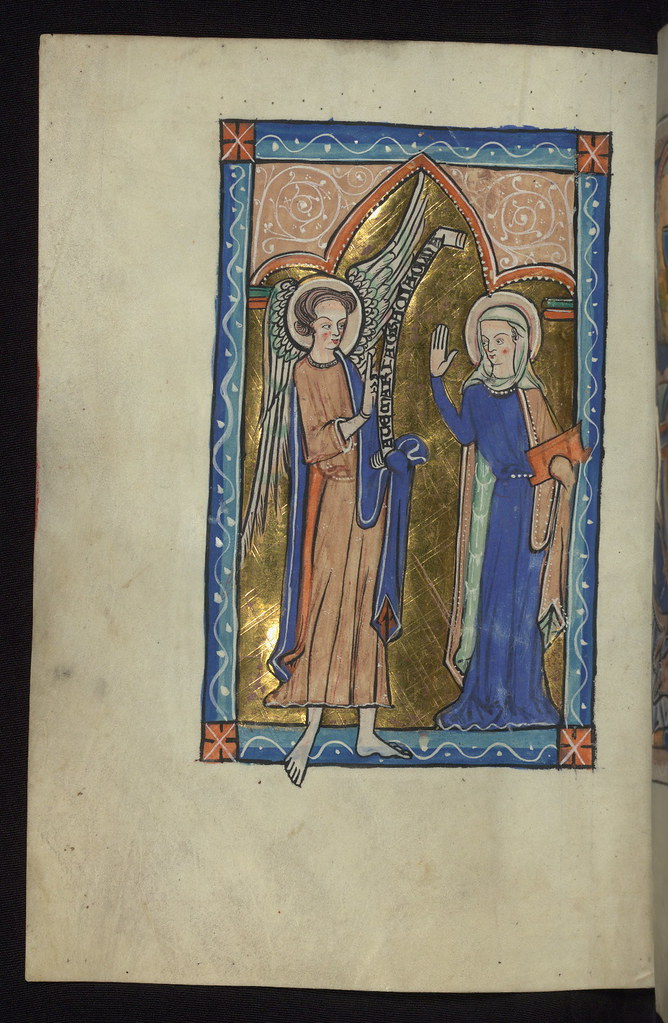Illuminated Manuscripts were a popular art form during the middle ages.
A very popular subject was the Annunciation-- when the angel Gabriel announced to Mary that she would conceive and bear the Son of God, Jesus.
Source
Introductory Slideshow Presentation
Materials
-pencil/ eraser (my favorite is a kneaded eraser)
-sketching paper
-watercolor paper
-board for mounting watercolor paper (cardboard works)
-masking tape
-art pen (fine black marker)
-watercolor pencils
-regular colored pencils (optional)
-gold or silver sharpie
-pencil/ eraser (my favorite is a kneaded eraser)
-sketching paper
-watercolor paper
-board for mounting watercolor paper (cardboard works)
-masking tape
-art pen (fine black marker)
-watercolor pencils
-regular colored pencils (optional)
-gold or silver sharpie
Process:
For expanded version showing the process in detail open this slideshow.
Slideshow-- Illuminated Manuscripts
For abbreviated version keep reading.
Phase I: Research/ Design
For expanded version showing the process in detail open this slideshow.
Slideshow-- Illuminated Manuscripts
For abbreviated version keep reading.
Phase I: Research/ Design
My example:
I drew inspiration from these two reference images that I found online. Drawing from these two images, I designed an original composition. I worked out this design through sketching before starting with my final version.
.jpeg)

Phase II: Execution
Transfer your final image to your piece of taped down watercolor paper.
Color with water soluble colored pencils.
Add water, beginning with lightest colors.
With a gold sharpie, add gold background and accents.

